There are 37 good companion plants for Daylilies in this list and as you expected, they are mostly flowers that add to the aesthetics of your garden. Although vegetables also can serve great as companion plants to daylilies, the majority of the Companion plants for daylilies are floral plants that also gain from daylilies as companion plants. But before we dive into them, let us know more about daylilies.
A daylily, often known as a day lily, is a flowering plant in the genus Hemerocallis, which belongs to the Asphodelaceae family. Despite its popular name, it is not a lily.
Hemerocallis are herbaceous clump-forming perennials that grow from rhizomes and have tuberous roots that store nutrients and water.
The crown is the little area of the plant that is between the leaves and the roots. A capsule is a fruit (often erroneously called a pod since botanical pods are found in Fabaceae). The fruits may be sterile or contain a huge number of reasonably big, glossy, black, roundish seeds.
Every part of the daylily plant is edible: you may eat the young shoots, cook the tubers like potatoes, or add vivid orange petals to salads. The current daylily color palette includes yellows ranging from delicate lemon to vivid yellow and gold to orange.
Scarlet, carmine, tomato-red, maroon, wine-red, and blackish-red are all tints of red. Some of the most intriguing types are patterned with distinct color zones around the neck; they are sometimes referred to as “eyes” daylilies.
Although daylily blooms are widely consumed as food in China, and the crown and root are used as medicine, gardeners, and horticulturists have long cultivated daylily varieties for their gorgeous flowers. It is a versatile plant that may be utilized in a variety of ways in the garden. It may be used as a ground cover, a border plant, or as a focal point.
Daylilies thrive in locations with full light and well-drained soil. They will bloom from late spring to early summer, and if the spent flowers are deadheaded, they may rebloom in mid-summer. They are quite flexible and will grow in almost any soil type, from full sun to partial shade.
The Day Lily tolerates a wide range of soil types, is resistant to pests and disease, and produces a steady stream of stunning flowers with no care.
Day Lilies are particularly adaptable in terms of placing in the garden due to their wide range of heights.
As lovely as daylilies are, they are also vulnerable to pests like aphids, slugs, spider mites, tarnished plant bugs, thrips, and even deer. Frequent daylily diseases include Leaf Streak, Leaf Scorch, Root Knot Nematodes, Rust, and Soft Rot.
So in this article, we are going to look into Thirty-Seven (37) Good companion plants for Daylilies and also Five (5) Bad companion plants of daylilies and why they are good or bad for your daylilies.
Table of Contents
Companion Plants for Daylilies
1. Agapanthus
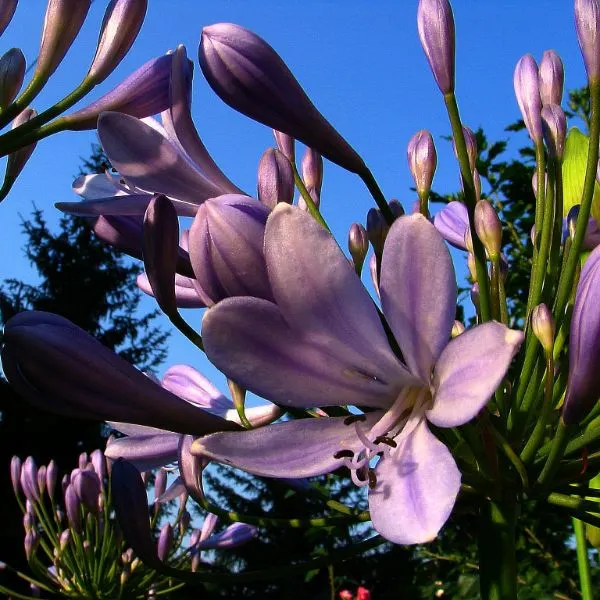
- Botanical name: Agapanthus africanus
- Sun Requirements: 6-8 hours of sunlight a day
- Soil Type: moist but well-drained soil of sand, clay, chalk, or loam within an acidic, alkaline, or neutral PH balance.
Agapanthus is a plant genus that is the sole member of the Amaryllidaceae subfamily Agapanthoideae. Several Agapanthus species are also known as Nile lilies or African lilies. They feature funnel-shaped or tubular flowers in blue to purple shades that fade to white.
Agapanthus is a magical and medical plant that is believed to heal heart illness, paralysis, coughs, colds, and other maladies, and its leaves are used as bandages (the plant does contain chemicals with anti-inflammatory and other properties).
Because agapanthus complements sun-loving annuals, perennials, and shrubs, Agapanthus is one of the best plants to cultivate alongside Daylilies. Another incentive to use Apaganthus as a companion plant for daylilies is their color.
A brilliant blue or purple agapanthus contrasts nicely with the yellows and oranges of daylilies, making agapanthus an excellent companion plant for daylilies. Daylilies thrive in broad light, and agapanthus is a pest and disease-free plant.
2. Anemones

- Botanical name: Anemone coronaria
- Sun Requirements: at least four hours of sun each day
- Soil Type: well-drained soil that is relatively moist.
Anemone is a herbaceous perennial tuberous flowering plant genus in the buttercup family Ranunculaceae, also known as a windflower. Anemones are perennial plants with basal leaves and lengthy leaf stalks. It is commonly planted for its ornamental blooms.
After the majority of your daylilies have finished blooming, fill in the gaps with fall-flowering perennials like anemones to extend the season of your flower garden.
To avoid contrasting plants with poor foliage in your daylily mixed border, choose perennials with foliage that looks great throughout the growing season next to daylilies, and you will never realize that the post-bloom daylily foliage is not an advantage. Anemones are an excellent plant for this.
The beautiful Japanese Anemone is a tall perennial that delivers vivid pink or white rose blossoms on graceful stalks. While it prefers comparable growth conditions as daylilies, it should ideally grow alongside them since they are tall companion plants, creating a wall of gorgeous flowers each summer when they bloom concurrently.
3. Asters

- Botanical name: Aster spp
- Sun Requirements: 8 hours of direct sunlight each day
- Soil Type: moist, well-drained, and average- to humus-rich.
Aster is a genus of blooming perennial plants of the Asteraceae family. Because of their gorgeous, appealing, and colorful blooms, many species and hybrids and variants are popular as garden plants.
Low-growing perennials like Asters provide good partners for short forms of daylilies, and they also attract Butterflies, which boosts pollination in your garden, especially in the autumn. In exchange, Daylilies provide a final beautiful explosion of color and pollen with asters.
4. Baby’s breath
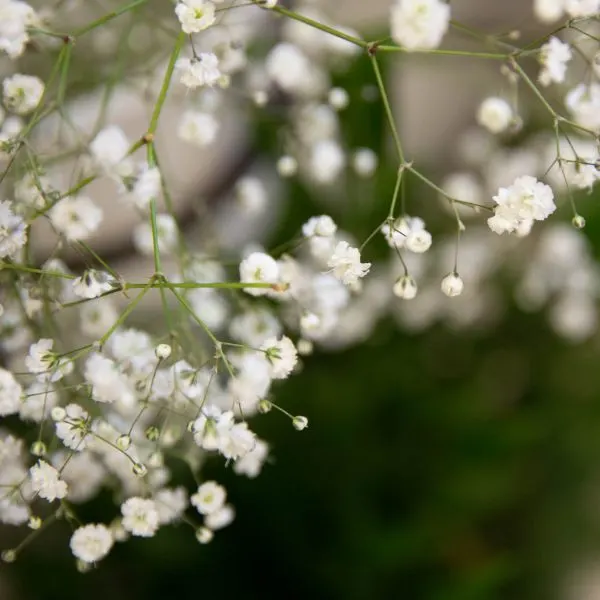
- Botanical name: Gypsophila paniculata
- Sun Requirements: at least six hours of direct sunlight a day.
- Soil Type: well-draining soil that’s slightly on the sandy side, with plenty of organic matter.
Baby’s breath, commonly known as common gypsophila or panicled baby’s-breath, is a flowering plant of the Caryophyllaceae family. In the summer, it forms mounds of spreading branches covered with clouds of small white flowers. It grows well in well-drained, alkaline to neutral soils and is a favorite decorative garden theme. It is widely employed in the floristry sector as a backdrop for bigger or more structured flowers.
Another drought-tolerant flower that might complement daylilies is the baby’s breath. It prefers full light and does not grow to be very tall, so it does not cast shade on surrounding daylilies.
It, like the daylily, likes soil with a pH of 7.0. Baby’s breath also attracts lovely insects like butterflies, hummingbirds, and other pollinators, which bring life and beauty to your garden.
These perennial flowering plants are all easy to care for, and while Daylilies bloom throughout summer, placing them among other plants that bloom at various periods, such as baby’s breath, can keep your garden looking full and intriguing.
Planting perennials like baby’s breath as daylily partners gives different flower hues and a variety of leaf textures.
5. Balloon flowers
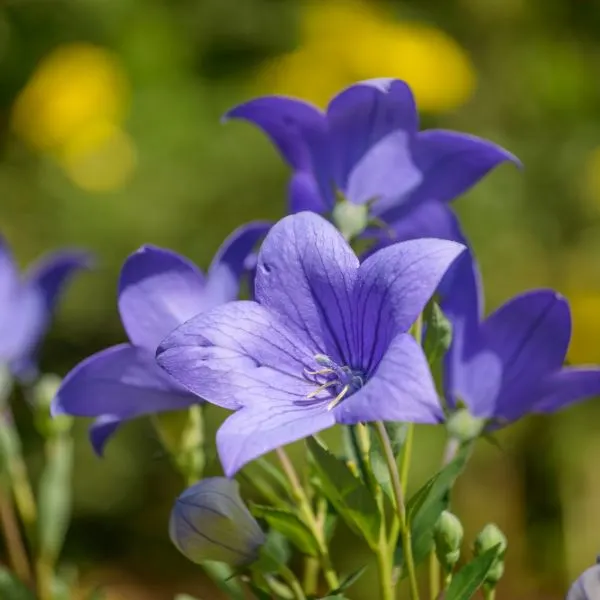
- Botanical name: Platycodon grandiflorus
- Sun Requirements: at least six hours of sunlight
- Soil Type: fertile, well-drained soil enriched with plenty of well-rotted manure or compost.
Balloon flowers are a herbaceous blooming perennial plant in the Campanulaceae family that grows in mountains and fields. It is also known as platycodon. Although the species features blue flowers, there are also white, pink, and purple variations. It is also one of the most commonly used components in Korean cuisine.
Balloon flowers are as simple to cultivate as daylilies and are the most dependable low-blue bloomers you’ll ever plant. As an extra bonus, flowering occurs in the middle to late summer, when many other perennials have finished blooming. Also. They are said to deter garden snails and slugs.
6. Bee balm
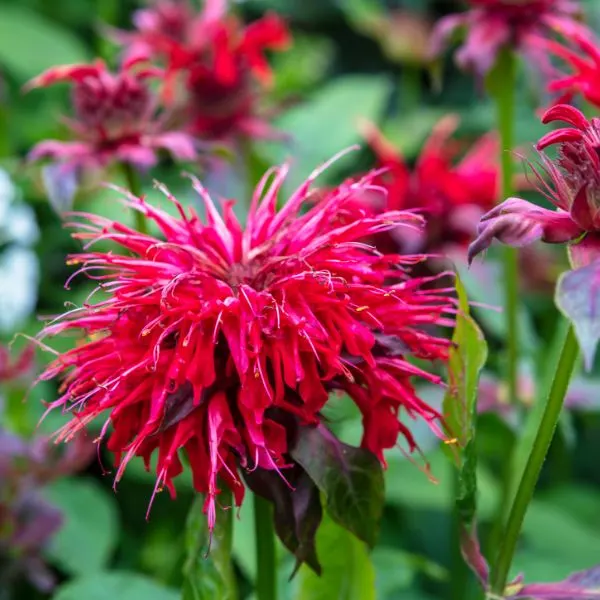
- Botanical name: Monarda spp
- Sun Requirements: at least 6 hours of direct sun each day
- Soil Type: moist, well-drained soil-rich organic matter.
Monarda is a genus of flowering plants in the Lamiaceae mint family. These are often dense head-like flower clusters with leafy bracts. The color of the flowers varies, with wild varieties producing red, pink, and light purple blooms.
Bee balm (Monarda), also known as bergamot, bee balm, horsemint, and oswego tea, is a fantastic partnering plant to include in your daylily bed since it produces large, unique blooms that bring a lot of color to your landscape. Bergamot’s odd blossoms seem quite appealing when contrasted with the daylily’s long grassy leaf blades.
Bee balm plants are perennial, which means they will return year after year to liven up your garden. Bergamot is an edible plant and part of the mint family with several therapeutic uses. The herb is aromatic and will draw a lot of pollinators to your yard.
This plant is most known for attracting bees, butterflies, and hummingbirds, but it is also edible and medicinal, may be used as a cut flower, is drought tolerant, is used to flavor fragrances, manufacture insect repellents and essential oils, is deer resistant, and self-sows!
Horsemint thrives in front of daylilies since they share the same growth conditions. These herbs require at least 6 hours of direct sunlight every day, flourish in well-drained soil, and are drought resistant.
Bee balm may be grown as a border plant in front of daylilies because it is quite short. Dwarf cultivars can only grow to be 15 inches tall, but standard cultivars can grow to be 20 inches tall. Bee balm, like daylilies, thrives in full sun and wet loamy soil. It blooms best in the late summer and early fall, with big, bright flower heads in red, purple, pink, or white.
Overall, it is a good companion for the daylily as the blooms begin to fade back in late summer to early autumn.
7. Black-eyed Susan
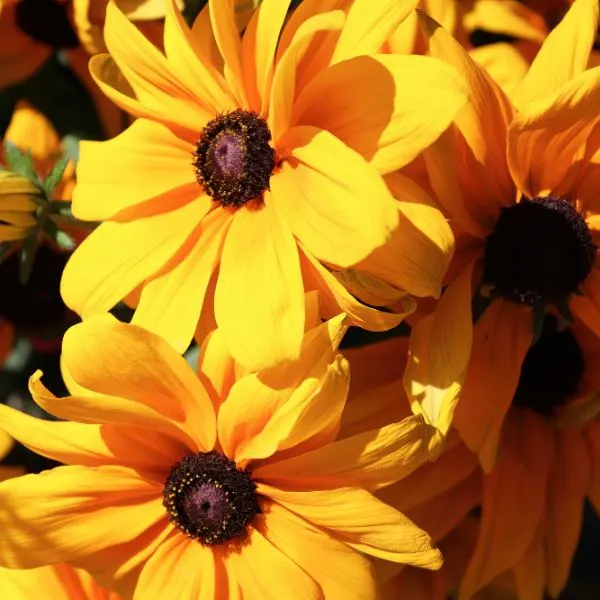
- Botanical name: Rudbeckia hirta
- Sun Requirements: about six hours per day.
- Soil Type: moist, well-drained soil which is fertile but they can tolerate tough conditions.
Black-eyed Rudbeckia hirta is an upright annual (occasionally biennial or perennial) that is extensively cultivated in parks and gardens for summer bedding schemes, borders, containers, wildflower gardens, prairie-style plantings, and cut flowers.
Black-eyed Susan is low-maintenance and attracts a plethora of hummingbirds, butterflies, and other pollinators to your daylily garden. While daylilies bloom throughout summer, interspersing them with a range of flowers that bloom at different times helps keep your garden appearing full and fascinating, and the black-eyed Susan is one such plant. It also tolerates dryness, and light cold is deer resistant, self-sows, and makes an excellent cut flower!
They thrive in the same conditions as daylilies and offer lovely flashes of color when planted beside them. Both bloom in the summer and demand full light as well as damp to dry, well-draining soil.
Trumpet-shaped daylilies in pink, red, and orange complement traditional orange-yellow black-eyed Susans. Both bloom in the middle of summer, with black-eyed Susan blossoms lasting until mid-autumn.
8. Butterfly Bush

- Botanical name: Buddleja americana
- Sun Requirements: a minimum of 8 hours of bright sunlight.
- Soil Type: sandier soils, but can be grown in clay soil as well, provided there’s no standing water.
Buddleja americana is the most common of the Buddleja species native to the Americas, and it is widely planted as a garden shrub. The species is not cold tolerant; temperatures just below freezing destroy it rapidly.
Butterfly Bush is very easy to manage and will attract hummingbirds, butterflies, and other pollinators to your daylily garden, aiding in pollination. They are, nevertheless, considered invasive in some sections of the United States.
9. Catmint
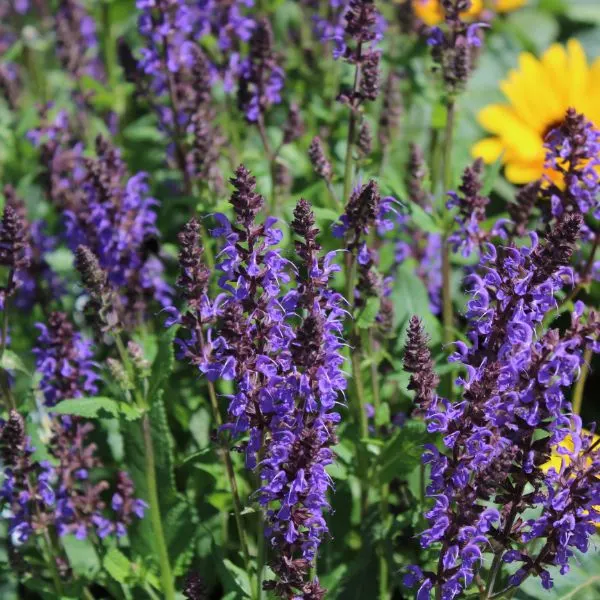
- Botanical name: Nepeta × faassenii
- Sun Requirements: a minimum of six hours of sunlight
- Soil Type: any soil that drains easily
Catmint, also known as Faassen’s catnip, is a flowering plant that is grown for its beautiful fragrant leaves and masses of blue flowers as a groundcover, boundary edging, or in pots or rock gardens. It can withstand drought and is deer resistant.
Catmint is an excellent companion plant for daylilies in any garden. The catmint’s deep green foliage contrasts well with the daylily’s vividly colorful blossoms. Because the two plants have similar growth tendencies and soil and water requirements, they are an ideal match.
Furthermore, the daylilies provide a consistent source of nectar, which attracts pollinators to the garden. Catmint is an excellent companion plant for vegetables and herbs, and the combination of daylilies and catmint creates a vivid and stunning environment. The more timid catmints (Nepeta), with their gray-green leaves and blue blooms, will make suitable planting partners for daylilies.
10. Carrot

- Botanical name: Daucus carota
- Sun Requirements: 6 to 10 hours of sun daily
- Soil Type: fertile, well-drained soil.
The carrot is a root vegetable, typically orange in color; though purple, black, red, white, and yellow cultivars exist, it is a biennial plant. The most commonly eaten part of the plant is the taproot, although the stems and leaves are also eaten.
Daylilies are often used in vegetable gardens because it is an ideal border plant to separate different types of veggies or to enhance the overall appeal of your vegetable garden. They also enhance the garden’s aesthetics.
Daylilies can pair with just about any vegetable plant, and that includes carrots and just about any type of leafy green. The daylilies will attract plenty of pollinators to your garden during the blooming season, and in return, they will provide good weed control.
When you grow daylilies with vegetables, you should keep the variety in mind. Some taller varieties could deprive your vegetables of needed sunlight and should be positioned at the back or in a separate row. Shorter varieties can be co-planted in the same garden bed to keep weeds out of your garden.
The carrot is a biennial plant that is primarily orange in color; however, purple, black, red, white, and yellow variants occur. The taproot is the most widely consumed plant portion, while the stems and leaves are also consumed.
Daylilies are frequently used in vegetable gardens because they are an excellent border plant for separating various types of vegetables or improving the overall appearance of your vegetable garden. They also improve the appearance of the garden.
Daylilies may be used with almost any form of a vegetable plant, including carrots and almost any type of leafy green. Throughout the flowering season, daylilies will attract many pollinators to your garden while also providing effective weed control.
While growing daylilies with vegetables, keep diversity in mind. Certain taller types may deny your veggies of necessary sunlight and should be placed at the back or in a separate row. To keep weeds at bay, plant shorter types together in the same garden bed.
11. Coral Bells
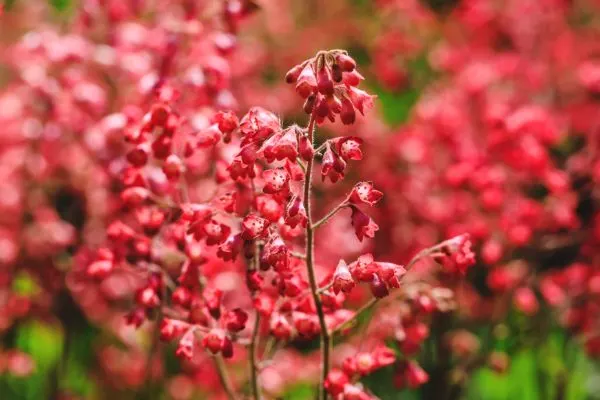
- Botanical name: Heuchera sanguinea
- Sun Requirements: 4 to 6 hours of direct sunlight per day.
- Soil Type: rich, well-draining soil but tolerant of clay or rocky soils and salt.
Coral bells is a blooming plant of the genus Heuchera with deep pink to crimson blooms that are pleasantly scented and bell-shaped. It is a perennial plant that attracts hummingbirds and bees. They are typically grown for decorative purposes.
Coral Bells (Heuchera) are excellent foliage plants for daylilies if you want to add some color to your garden bed. This bushy plant’s leaves are vibrantly colored, with green, pink, purple, and gold tones. This filler plant may be used as a ground cover to keep the soil wet and prevent weeds from developing in your garden. It also produces lovely bell-shaped blooms in the spring and early summer.
Coral bells thrive in the shade given by the daylily plants’ tall spiky leaves and can grow nicely between them. When these bushy plants bloom, they will produce a large number of delicate bell-shaped blooms that can be quite attractive.
The leaves will grow nicely in well-draining soil, although they may require more than regular daylilies. This plant makes a wonderful ground cover and looks fantastic in borders. They come in a variety of attractive hues, such as gold, green, pink, and purple, and they are a great low-maintenance alternative for landscaping beds and container gardening. Coral bells are the finest planted in front of daylilies, but they can also be planted between these flowering plants.
12. Daffodils

- Botanical name: Narcissus poeticus
- Sun Requirements: at least six hours of direct sun per day.
- Soil Type: loose, loamy, fertile, and, most of all, well-draining soil.
The poet’s daffodil, also known as the poet’s narcissus, Nargis, pheasant’s eye, findern flower, or Pinkster lily, was one of the earliest daffodils to be grown. The bloom is exceptionally fragrant, with a ring of pure white tepals and a short corona of pale yellow with a noticeable reddish border. Poet’s daffodil is grown in the Netherlands and southern France for its essential oil, narcissus oil, which is one of the most commonly used smells in perfumes.
Daffodils (Narcissus) are wonderful landscape plants to add to your garden if you want to add plenty of color during the springtime when your daylilies haven’t bloomed yet, thus putting daffodils between daylilies toward the back of your garden bed will provide a burst of color in early spring.
When the bulbs have blossomed, the leaves should be allowed to die back naturally. This isn’t a pretty sight, yet it feeds the bulb the next year. The foliage of the daylily will cover the bulbs’ withering and dying leaves.
They are also wonderful companion plants for daylilies since the daylily foliage will disguise the daffodil foliage as it begins to fall back after the bloom season. When planting daffodils, place them between your daylilies or at the back of your garden bed. In this manner, you can quickly conceal the dying foliage while the flowers draw a lot of attention during the summer.
Daffodils dislike direct sunlight. They love sun or light shade, but if planted behind your daylilies in well-drained soil, they can thrive.
13. Dianthus
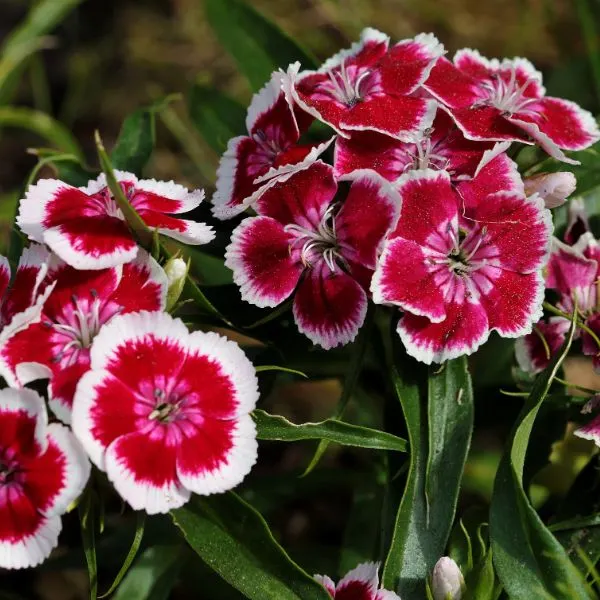
- Botanical name: Dianthus caryophyllus
- Sun Requirements: at least six hours per day.
- Soil Type: rich, well-draining soil but tolerant of clay or rocky soils and salt.
Dianthus, sometimes known as the carnation or clove pink, is a herbaceous perennial plant in the Dianthus genus. The original natural bloom color is vivid pinkish-purple, but cultivars of different hues have been produced, including red, pink, yellow, white, and green. They are used in medicine to treat conditions such as upset stomach and fever. Historically, their smell was employed in vinegar, beer, wine, sauces, and salads.
Dianthus comes in a variety of hues, plant sizes, and flower sizes. Some are annuals, while others are perennials, but both are excellent companions for daylilies because they have little feathery sweet-smelling blooms that bloom throughout the summer and attract pollinators to your daylily garden.
They also improve the aesthetic quality of your yard because of how well they complement your daylily plant.
14. Dwarf marigolds
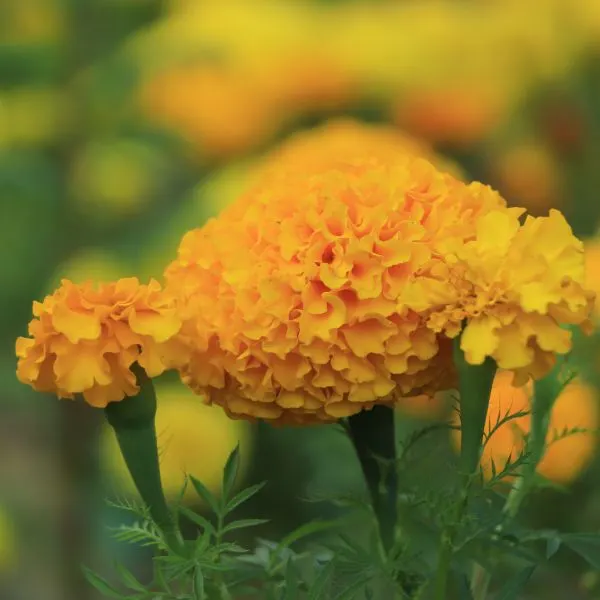
- Botanical name: Tagetes spp
- Sun Requirements: at least six hours of sunlight each day.
- Soil Type: moderately fertile, well-drained soil.
Tagetes is a genus of annual or perennial herbaceous plants of the Asteraceae family. They are one of several plant groupings known as marigolds in English. Flowers are naturally golden, orange, yellow, and white, with maroon hues. It has been utilized as an essential oil source for perfume and the industry known as tagette or “marigold oil,” as well as a flavoring in the food and tobacco sectors.
Marigolds make excellent border plants and are excellent companion plants for daylilies; however, you should utilize their fiery colors with caution. They look best with daylilies in bright hues, such as yellow and orange. On the other hand, taller African marigolds are typically planted in bunches at the back of the border garden.
15. False Indigo

- Botanical name: Amorpha fruticosa
- Sun Requirements: six hours of direct sunlight.
- Soil Type: moist, rich, well-draining soil
False Indigo, also known as desert false indigo, false indigo-bush, and bastard indigo bush, is a perennial shrub species of flowering plant in the legume family Fabaceae. It is frequently grown as an ornamental plant.
Although False Indigo might take several years to mature completely, it is another plant that complements daylilies. It is, nevertheless, a plant that is difficult to kill, takes little maintenance and, like the daylily, prefers full sun, minimum shade, and not too much water.
They also attract bees and butterflies and are resistant to typical flower illnesses. Placing them alongside or as a backdrop for the daylily will provide color and richness to the garden throughout the summer.
It is crucial to know that False Indigo may grow to a height of three feet, so bear this in mind when deciding where to plant it.
16. Floss flower
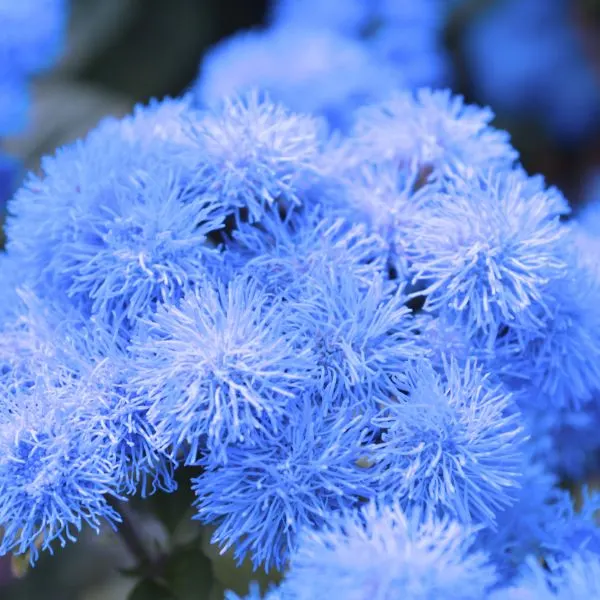
- Botanical name: Ageratum houstonianum
- Sun Requirements: at least 6 to 8 hours of sunlight daily
- Soil Type: moist but well-drained soil that has been amended with compost or peat moss.
Floss flower, also known as blue mink, blueweed, pussy foot, or Mexican paintbrush, is a cool-season annual plant that is widely planted as garden bedding. It is a herbaceous annual or dwarf shrub that is commonly used as a decorative plant for summer borders and balcony boxes, with high varieties also being used as cut flowers.
Floss flowers are butterfly-attracting plants that may be grown in almost any garden. Asteraceae family members, such as the floss flower, are common butterfly garden flowers. These fluffy purple-blue blooms bloom from late spring until the first frost in milder climes, making them an essential source of nectar for butterflies ready to migrate south for the winter. This attracts a large number of pollinators to your daylily garden.
Deers, which enjoy eating daylilies, have no inclination to consume plants with a fuzzy, feathery texture like floss flowers; deers always avoid the fluffy, pom-pom-like blossoms of floss flowers. This is a huge benefit for your daylilies since floss flowers will shield them from deer assaults when planted beside them in the yard.
17. Blazing star
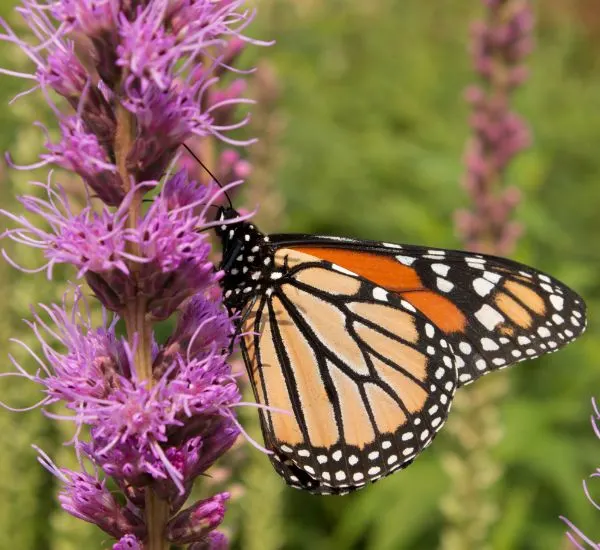
- Botanical name: Liatris spp
- Sun Requirements: a minimum of six hours of sunlight
- Soil Type: rich, moist, well-drained soils.
Liatris, also known as gayfeather and the blazing star. It is a genus of flowering plants in the tribe Eupatorieae of the Asteraceae family. Several species are utilized as decorative plants, such as in flower arrangements. These are perennials that survive the winter as corms.
This North American native is also known as a blazing star, and its nectar attracts a broad range of butterflies to your garden when planted near your daylilies; they also make a good-cut flower—blazing star flowers from midsummer through fall, when many other perennials are beginning to fade.
In flower beds, pots, cutting gardens, and naturalized settings, Liatris creates a towering, eye-catching statement. It is also drought resilient, which means it may thrive even when irrigation is infrequent.
18. Hardy Hibiscus
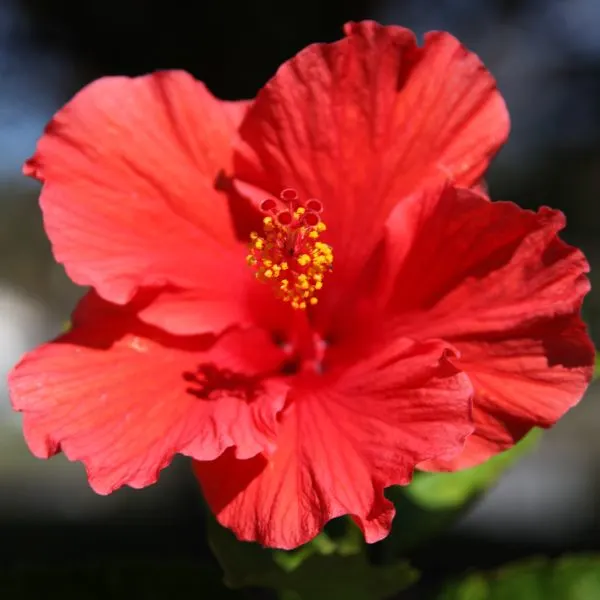
- Botanical name: Hibiscus moscheutos
- Sun Requirements: 8+ hours of direct sun, daily
- Soil Type: Loam and sandy loam soils
Hibiscus moscheutos, also known as the rose mallow, swamp rose-mallow, crimson-eyed rosemallow, or eastern rosemallow, is a flowering plant in the Malvaceae family. It is a cold-hardy perennial bog plant that forms enormous colonies. Petal hues range from pristine white to deep rose, with the majority having a deep maroon eye. They are appealing to animals, especially nectar feeders, and birds.
Hibiscus are adaptable perennials that grow in the same conditions as daylilies. Even when the plants aren’t in flower, the strappy foliage of daylilies contrasts beautifully with the large leaves of hibiscus, providing interest to the arrangement. They also do not compete for space with daylilies because they flourish in the same growth circumstances as daylilies.
19. Hosta
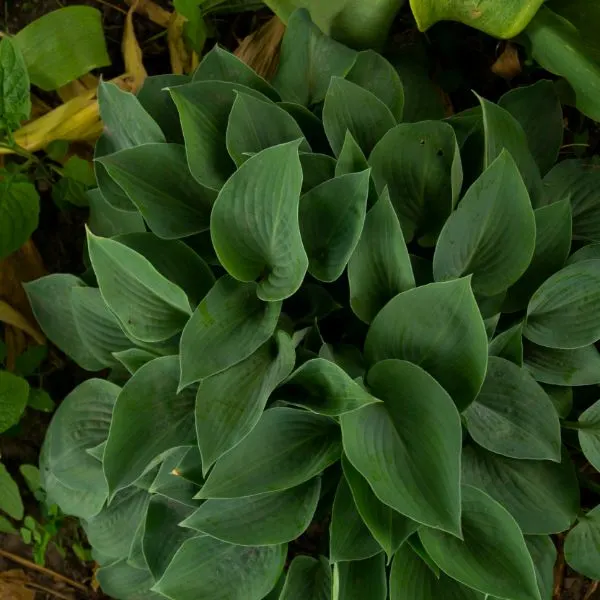
- Botanical name: Hosta sieboldiana
- Sun Requirements: at least 4-6 hours of the direct morning sun.
- Soil Type: consistently moist but well-drained soil amended with some organic matter.
Hosta is a genus of herbaceous perennial plants known as hostas and plantain lilies. Hostas are commonly grown as shade-tolerant foliage plants. But, if taken in sufficient numbers, hostas may be harmful to dogs, cats, and horses.
If planted in partial shade, daylilies make excellent Hosta companion plants. (They won’t bloom properly if the environment is too shady). Daylilies come in a variety of hues, making it simple to choose one that will match your hostas. Daylilies bloom best in regions that get early sunlight.
Companion planting Hostas with daylilies, on the other hand, may keep the entire bed alive with color and texture throughout the summer and fall. Throughout the growing season, strappy grass-like foliage contrasts with robust hosta foliage. Pay attention to plants with stunning leaves, such as hostas, while looking for a nice companion plant for daylilies.
Lastly, alternating Daylilies with Hostas creates a lovely border along a walkway or at the edge of a retaining wall.
20. Hyacinths
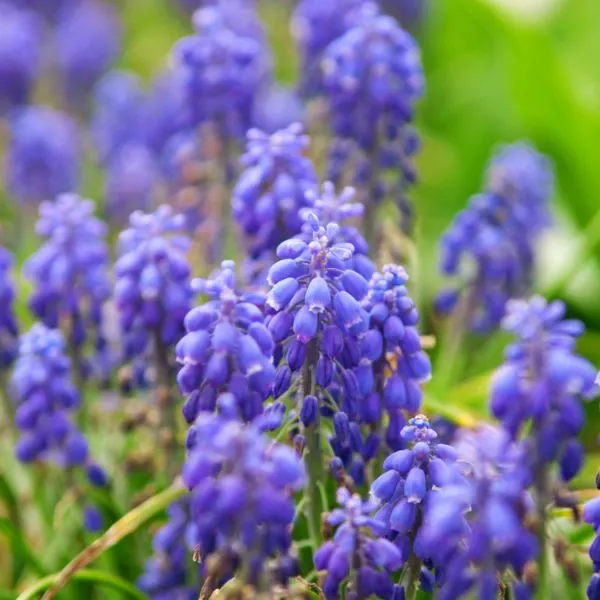
- Botanical name: Hyacinthus orientalis
- Sun Requirements: at least six to eight hours of sunlight a day.
- Soil Type: loamy, well-draining soil.
Hyacinthus is a small genus of spring-blooming bulbous perennials. These are fragrant blooming plants in the Asparagaceae family, generally referred to as hyacinths. The blossoms are incredibly fragrant and attract insects by providing nectar. On the other hand, the bulb is the most dangerous and should never be consumed.
Daylilies are ideal partners for spring bulbs such as hyacinths, and planting them will benefit your daylilies. This is due to the fact that once the bulbs have flowered, the leaves are allowed to die back, which isn’t a pretty sight naturally, but it nourishes the bulb for the next year. The foliage of the daylily will cover the bulbs’ withering and dying leaves. This makes it an excellent companion plant for daylily.
21. Lavender
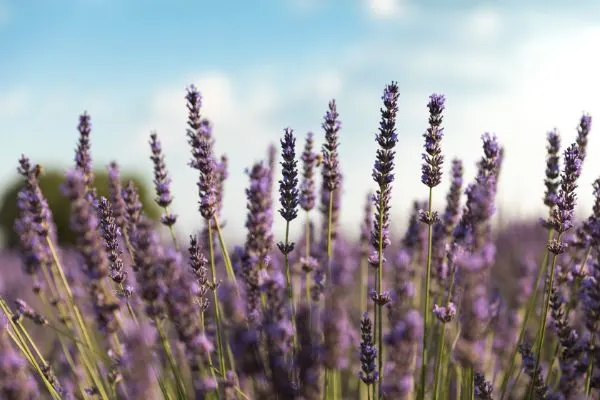
- Botanical name: Lavandula spica
- Sun Requirements: at least 6 to 8 hours of sunlight each day
- Soil Type: poor, dry, or moderately fertile soil, including chalky and alkaline soils.
Lavender (also known as Lavandula) is a genus comprising 47 recognized flowering plants in the mint family. There is a color called after the hue of this species’ blossoms. Lavender has been used in traditional medicine and cosmetics for ages.
Lavender is low-maintenance and attracts a plethora of hummingbirds, butterflies, and other pollinators to your daylily garden. Because daylilies bloom all summer, plant them with a range of plants that bloom at different times, such as lavender, to make your garden seem full and intriguing. Planting perennials like lavender as daylily partners gives not only different flower hues but also a variety of leaf textures.
22. Ornamental grasses
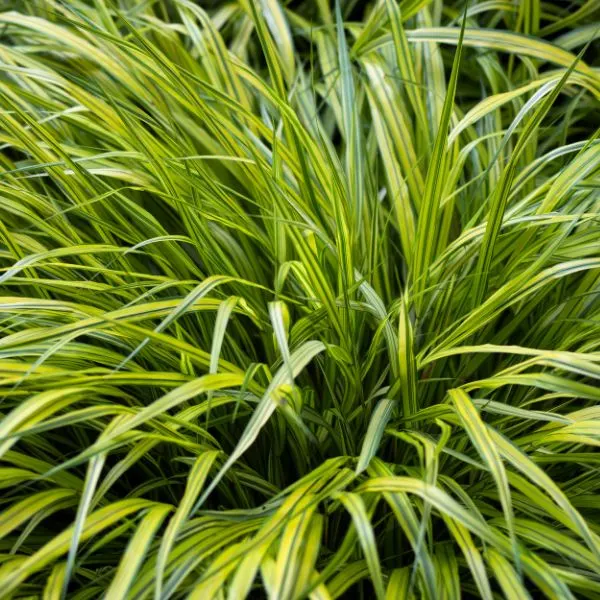
- Botanical name: Variant dependent.
- Sun Requirements: at least six hours of direct sunlight every day.
- Soil Type: light, moist but free-draining, moderately fertile soil.
Ornamental grasses are grasses grown for their decorative value. Virtually all ornamental grasses are perennials that sprout in the spring from roots that have stored a lot of energy and then die in the fall or winter. It is grown for ornamental purposes, as the name indicates.
Since they provide a pleasant background for the flowers’ ever-changing bloom patterns, ornamental grasses are an appropriate perennial companion for daylilies.
Mexican Feather Grass, Northern Sea Oats, Little Bluestem, Big Bluestem, Pennisetum, and Switchgrass are among the most successful ornamental grasses due to their delicate textures and neutral hues. They are incredibly simple to maintain.
The enormous, attractive blooms of the daylilies produce strong patterns against them, changing from day to day as fresh flowers emerge. The grasses fill in the gaps between the flowers and thread the daylilies into the overall fabric of the garden.
Daylilies are perfect for landscape plantings, especially when combined with ornamental grasses that come in various sizes, spreads, and leaf patterns. This may result in a stunning garden full of visual intrigue with grasses and daylilies.
23. Peonies
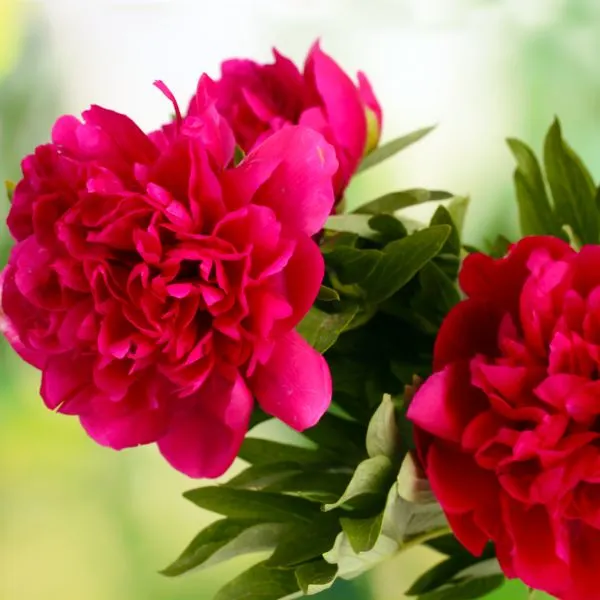
- Botanical name: Paeonia officinalis
- Sun Requirements: at least 6 to 8 hours of sun each day.
- Soil Type: neutral or slightly alkaline soil.
The peony is a flowering plant of the genus Paeonia, the sole genus in the Paeoniaceae family. Most are herbaceous perennials with complex, deeply lobed leaves and enormous, often fragrant blooms in late spring and early summer that range in color from purple and pink to red, white, or yellow. In temperate climates, peonies are attractive garden plants. Herbaceous peonies are also widely available as cut flowers.
Peonies come in a broad variety of hues and kinds. They produce large, beautiful flowers in every color conceivable year after year with little or no care and are especially appealing to butterflies, hummingbirds, and other pollinators. One of the main reasons to choose peonies is that they contrast nicely with daylilies. They’ll look great planted next to each other.
Daylilies complement peonies well in the garden because their grassy mounds of leaves offer a gentle texture to borders. They generally bloom after peonies (although this is variety-dependent). Once the peony flowers fade, the long stalks of daylily blossoms are ready to take their place.
24. Petunias

- Botanical name: Petunia atkinsiana
- Sun Requirements: at least 5 or 6 hours of good sunlight.
- Soil Type: neutral or slightly alkaline soil.
Petunia is the biggest flowering Petunia plant. Because young plants may be produced from seeds, petunias can be easily grown in tubs, window boxes, hanging baskets, and other containers.
Petunia plants come in a variety of forms and hues. It is an excellent daylily partner since it provides ground bedding and works well as a border plant. When planted with daylilies, you may expect brilliant colors in your garden from summer through fall. Petunias also appreciate full light, good soil, and frequent irrigation in dry situations.
25. Phlox

- Botanical name: Phlox paniculata
- Sun Requirements: at least six hours in direct sunlight every day.
- Soil Type: well-drained soil
Phlox is a genus of 67 perennial and annual plants of the Polemoniaceae family. Flowers come in a variety of colors, including mild blue, violet, pink, vivid red, and white. Several of them are aromatic. Phlox paniculata is a flowering plant species in the phlox family (Polemoniaceae).
Fall Phlox, garden phlox, perennial Phlox, summer phlox, and panicled Phlox are all common names for this plant. Numerous garden varieties have been produced.
Phlox is a great border plant that pairs nicely with daylilies. These flowering perennial perennials are all low-maintenance and will attract hummingbirds, butterflies, and other pollinators to your yard. It is simple to cultivate and may be found growing wild in many regions.
Creeping Phlox is a mat-forming ground cover that will cover your daylilies with flowers throughout the growing season. Its erect stems with big, strong, domed-shaped blooms produce vivid spring to late summer color that pairs wonderfully with the daylily. Phlox prefers the same free-draining soil as daylilies and prefers full sun or mild shade.
26. Purple Coneflower
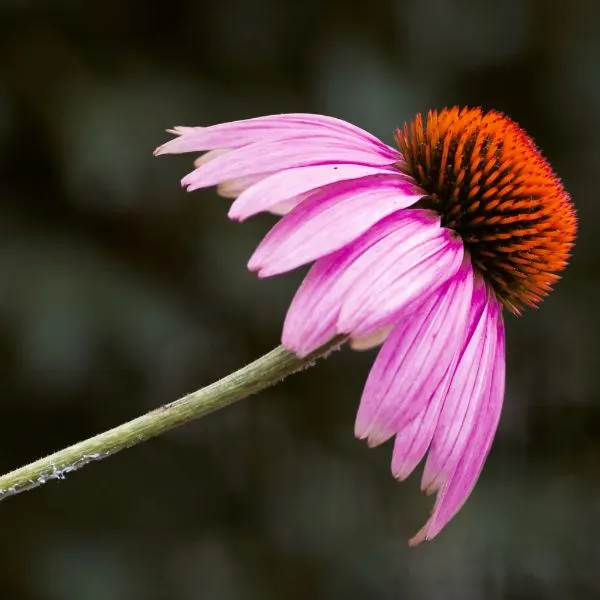
- Botanical name: Echinacea purpurea
- Sun Requirements: at least six hours of sun each day.
- Soil Type: sandy, rocky, and clay soils.
Phlox is a genus of 67 perennial and annual plants of the Polemoniaceae family. Flowers come in a variety of colors, including mild blue, violet, pink, vivid red, and white. Several of them are aromatic. Phlox paniculata is a flowering plant species in the phlox family (Polemoniaceae).
Fall Phlox, garden phlox, perennial Phlox, summer phlox, and panicled Phlox are all common names for this plant. Numerous garden varieties have been produced.
Phlox is a great border plant that pairs nicely with daylilies. These perennial flowering perennials are all low-maintenance and will attract hummingbirds, butterflies, and other pollinators to your yard. It is simple to cultivate and may be found growing wild in many regions.
Creeping Phlox is a mat-forming ground cover that will cover your daylilies with flowers throughout the growing season. Its erect stems with big, strong, domed-shaped blooms produce vivid spring to late summer color that pairs wonderfully with the daylily. Phlox prefers the same free-draining soil as daylilies and prefers full sun or mild shade.
27. Roses

- Botanical name: Rosa spp
- Sun Requirements: a minimum of four hours of direct sunlight
- Soil Type: one-third clay, one-third coarse sand, and one-third decomposed organic matter.
A rose is a woody perennial blooming plant in the Rosaceae family that belongs to the genus Rosa. Its blooms vary in size and form, but they are often enormous and spectacular, with colors ranging from white to yellow to red.
Roses are primarily recognized as attractive plants planted in gardens and sometimes inside for their blossoms. They’ve also been employed in commercial fragrance and cut flower harvests.
Roses and daylilies go well together. Daylilies bloom shortly after the initial flush of roses, resulting in a continual bright show. It gives color and interest to the garden throughout the year and attracts pollinators such as bees and butterflies.
Nevertheless, the rose’s growth habits are similar, necessitating a lot of light and rich, well-drained soil. Rose tolerates arid weather and occasional shade, making them an excellent companion plant for daylilies in hot, dry places.
But, avoid placing the daylily in the shade of their rose companions.
28. Russian Sage
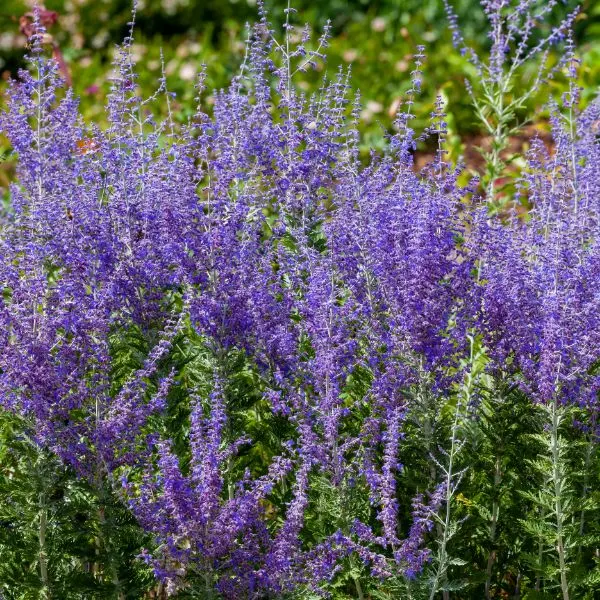
- Botanical name: Perovskia atriplicifolia
- Sun Requirements: 6-8 hours of full sun.
- Soil Type: well-drained soil
Russian sage is a herbaceous perennial plant that blooms in the spring. The leaves are fragrant, especially when crushed, with a sage-like scent that is a combination of sage and lavender. Russian sage has long been used in traditional medicine.
One of the best options is Russian Sage, which is widely recognized for its resilience. It has a lovely lavender tint that will go well with the daylily’s vivid petals. It is a wonderful neighbor in terms of companion planting because it requires little water and complete sun exposure.
Russian sage, particularly white sage (Artemisia Iudoviciana), is a wonderful daylily companion plant because its gray-green leaves provide contrast and texture to your garden bed. It is a wonderful filler plant for covering bare spots among your daylilies.
These perennials grow quickly, thrive in any well-draining soil, are drought resistant, and thrive in direct sunshine. You may rapidly develop a very lush and scented landscape with them in the garden. This herb’s little yellow-gray blossom buds will not overpower the other flowers in your garden bed.
They also attract a variety of pollinators, such as hummingbirds, butterflies, and bees, to your garden. They are sturdy, flourish in well-drained soil, like lots of sun, and can be planted beside the daylily or in a central bed position.
To grow sage with daylilies, plant this stunning leaf between your daylilies because sage grows at a comparable height to most daylily kinds. Make sure to provide enough space since sage spreads fast and can take up a lot of space in your garden bed.
It is crucial to highlight that, unlike other types of sage, Russian Sage is not edible and should not be ingested owing to the danger of poisoning.
29. Salvias
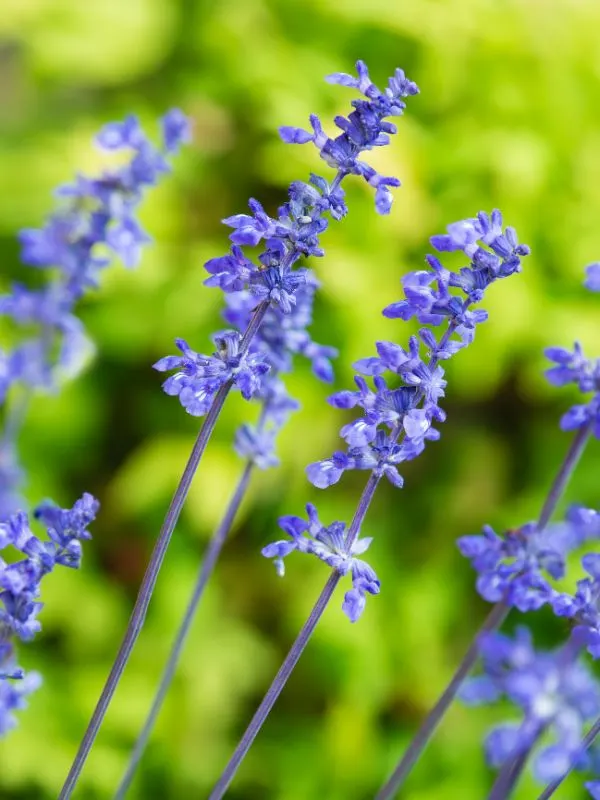
- Botanical name: Salvia officinalis
- Sun Requirements: a minimum of six hours of direct sunlight daily.
- Soil Type: well-drained soil can thrive on stony or poor soils
With almost 1000 species of shrubs, herbaceous perennials, and annuals, Salvia is the biggest genus of plants in the Lamiaceae sage family. The blooms range in hue from blue to red, with white and yellow being less prevalent.
Salvia prefers wet, well-drained soil and full light, making it an ideal companion plant for daylilies. This valuable plant occurs in a variety of sizes, colors, and forms, and blooms in the summer, producing spikes of hollow, tube-like flowers ranging in color from purple to vivid blue. They look lovely in borders or put behind taller daylilies.
30. Sedum
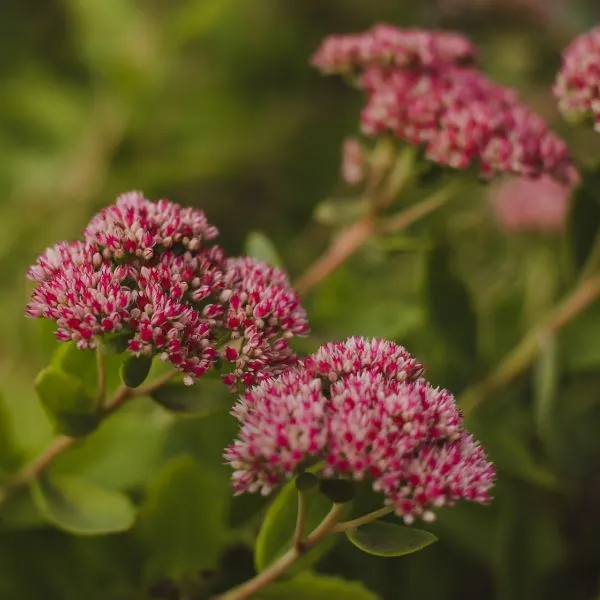
- Botanical name: Sedum acre
- Sun Requirements: 6 hours of sunlight per day.
- Soil Type: well-drained sandy soil.
Sedum is a vast genus of flowering plants in the Crassulaceae family. The plants range in size from annuals to creeping herbs to shrubs. Flowers typically have five petals, seldom four or six. Because of their unusual and beautiful look and resilience, many sedums are cultivated as decorative garden plants.
When cultivated with the daylily, sedum is a fantastic groundcover that adds a lot of color and intrigue.
This succulent is extremely resilient, thrives in drought circumstances, prefers full sun, and requires very little water. Sedum looks great even before the daylilies bloom.
Small blossoms occur in the fall, complementing the daylily’s last blooms.
But, you should avoid growing plants with problematic leaves next to one other in the mixed border, as this will cause an aesthetic problem in that region. Instead, plant perennials with foliage that looks great all season next to daylilies, and you’ll never notice that the post-bloom daylily foliage isn’t an advantage. Fall-flowering Japanese anemones and sedums, for example, have foliage that looks wonderful all season.
31. Shallots
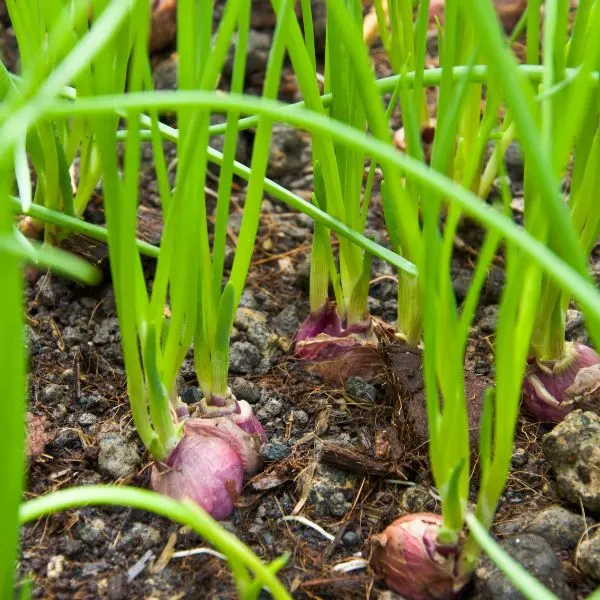
- Botanical name: Allium cepa
- Sun Requirements: at least six hours of direct sunlight.
- Soil Type: fertile, well-drained soil enriched with plenty of well-rotted manure or compost.
Shallots are also known as golden shallot, French shallot, eschallot, and echalotte. It is part of the Alliaceae, which is the onion family. The bulbs are a culinary onion with a superb mild flavor. They can be eaten raw, boiled, pickled, baked, or fried. Shallots are great for making your own pickled onions and a range of sauces and can be used in place of normal onions for a milder taste.
Daylilies make excellent companions for spring bulbs. Planting perennial flowers such as daylilies with alliums, including shallot, offer different colors that compliment your potted shallots. Also, Daylilies attract hummingbirds and also beneficial insects.
In return, after the bulbs of shallot have bloomed, the leaves are left to die back naturally. This isn’t a pleasant sight, but it nourishes the bulb for the following year. But as the leaves of the bulbs wither and die, the foliage of the daylily will obscure them and cover them from being seen as they continue to nourish the garden soil.
32. Shasta Daisy
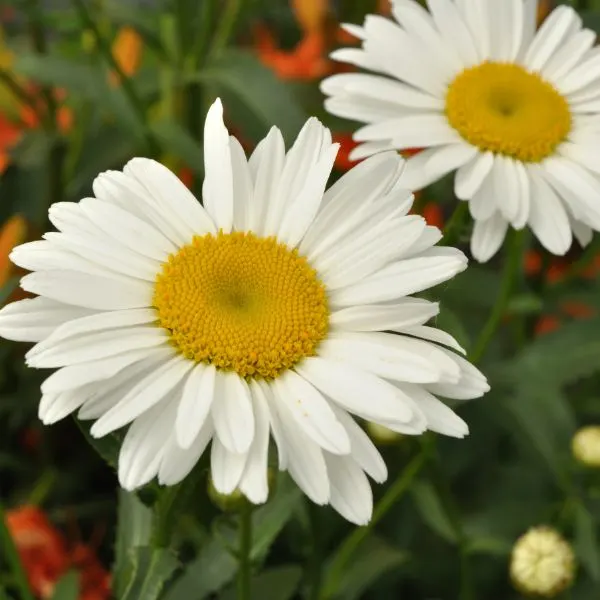
- Botanical name: Leucanthemum superbum
- Sun Requirements: at least 6 hours of direct sunlight a day
- Soil Type: rich with organic matter, such as compost.
The Shasta daisy is a widespread blooming herbaceous perennial plant with white petals that resembles a daisy. Shasta daisy blooms are perfect as bedding plants, with appealing foliage that stays green year-round. Shasta daisies have a wildflower aspect and are a fantastic option for container gardens, cut flower plantings, and butterfly gardens. White with yellow centers, Shasta daisy blossoms are about three inches wide.
If you want to add extra color to your yard while your daylilies are in bloom, Shasta daisies might be a fantastic companion plant. Although the near-white varieties may appear wrong with this basic bloom, Shasta daisies are easy to care for and bring a plethora of hummingbirds, butterflies, and other pollinators to your daylily garden.
When planted in a sunny location, these daisies blossom profusely. They will produce an abundance of lovely white flowers with yellow centers. The herbaceous plant is quite hardy and can thrive in a variety of soil types.
It is best to place these flowers between your daylilies for the best results. Daisy flowers are similar in height to daylily flowers, and the striking white flowers will look stunning with the cheerful daylily flowers peeking out amongst them.
33. Siberian Iris
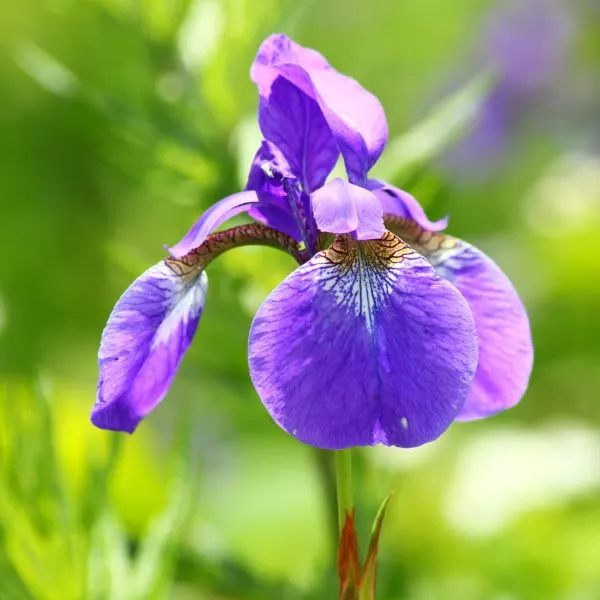
- Botanical name: Iris sibirica
- Sun Requirements: at least 6 to 8 hours of sunlight per day
- Soil Type: well-drained soil moderately rich in organic matter.
The Siberian iris (also known as the Siberian flag) is a species of Iris. It’s a rhizomatous herbaceous perennial with blue and white blooms. It is grown as an ornamental plant in temperate climates.
These are the ideal irises for the perennial border and landscaping because of their gorgeous branches, flowering leaves, and tidy growth habit. Their magnificent foliage is stunning throughout the year, even after the first frost, when it turns rusty red-brown.
To prevent bulb rot, irises require full sun and well-drained soil. As a result, they are perfect partners for daylilies that flourish in similar circumstances.
Furthermore, their delicate ballerina-like flowers come in a variety of colors, providing stunning splashes of color from early spring to late summer. Irises of all varieties grow easily and flourish in the same conditions as daylilies. There are also over 300 distinct iris kinds to pick from.
34. Tomatoes
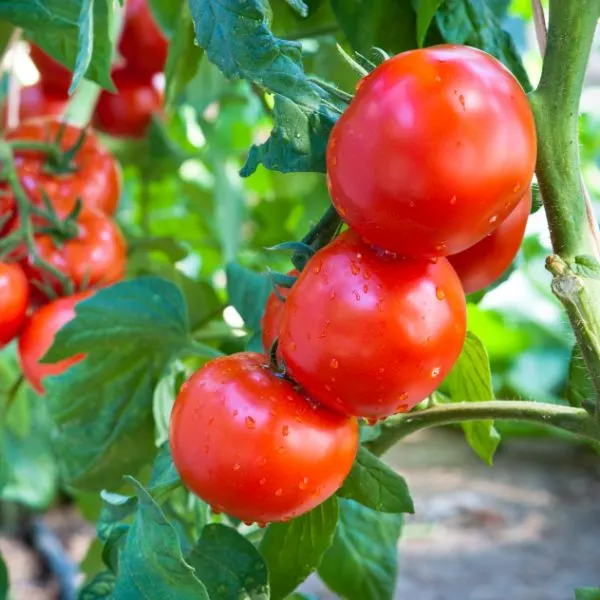
- Botanical name: Solanum lycopersicum
- Sun Requirements: at least eight hours a day
- Soil Type: well-drained, fertile, sandy loam
Tomatoes are the edible berries of the plant Solanum lycopersicum, often known as the tomato plant. They are eaten raw or cooked and in a variety of cuisines, sauces, salads, and beverages. While tomatoes are technically fruits (botanically classed as berries), they are most typically utilized in cooking as a vegetable element or side dish.
Daylilies are frequently used in vegetable gardens because they are an excellent border plant for separating different sorts of vegetables or improving the overall appearance of your tomato garden.
Daylilies go well with almost any vegetable plant, including cabbages, carrots, squash, cucumbers, tomatoes, and almost any form of leafy green. Throughout the flowering season, daylilies will attract many pollinators to your garden and will help to reduce weeds.
Because every part of the daylily is edible, it is an ideal companion plant for food gardens. Young branches and blooms may be used for salads and other cold foods, while tubers can be cooked like potatoes. These flowers are not nutrient-hungry and will not deprive your vegetables of essential nutrients.
While growing daylilies with vegetables, keep diversity in mind. Certain taller types may deny your veggies of necessary sunlight and should be placed at the back or in a separate row. To keep weeds at bay, plant shorter types together in the same garden bed.
35. Tulips

- Botanical name: Tulipa gesneriana
- Sun Requirements: a minimum of 6 hours daily
- Soil Type: fertile, well-drained neutral to alkaline soil, full of organic materials.
Tulips (Tulipa) are a genus of perennial herbaceous bulbiferous geophytes that bloom in the spring (having bulbs as storage organs). The flowers are typically large, showy, and brightly colored, ranging from red to pink to yellow to white (usually in warm colors). Tulip petals can be eaten. Although some people are allergic to tulips, the taste varies by variety and season and is roughly similar to lettuce or other salad greens.
Tulips, which work best with daylilies when planted in between your daylily plants, make excellent companions for daylilies. This is due to the fact that after the bulbs have bloomed, the leaves will be allowed to die back naturally. And while this is not a pleasant sight, it does nourish the bulb for the following year. The foliage of the daylily will obscure the bulbs’ withering and dying leaves. This makes them great garden companions for each other.
36. Yarrow
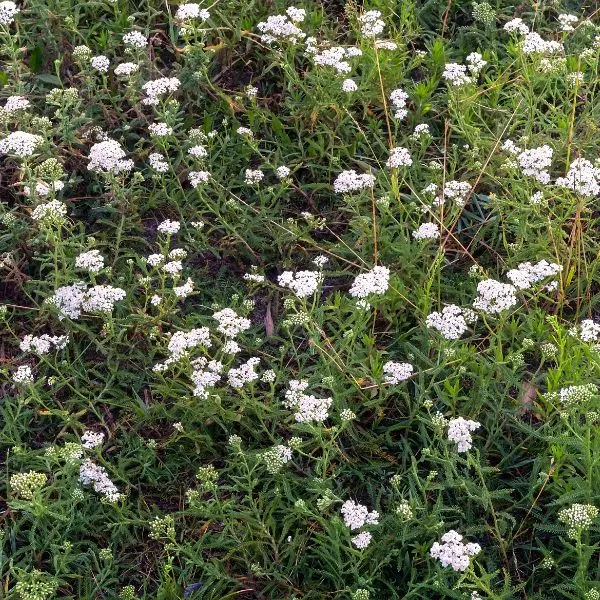
- Botanical name: Achillea millefolium
- Sun Requirements: 6+ hours of sun
- Soil Type: well-drained soil.
Yarrow is an erect, herbaceous, flowering perennial plant in the Asteraceae family. The plant has a strong sweet scent similar to chrysanthemums, which may irritate some people. Many plant nurseries grow it as an ornamental plant. It is grown in a variety of climates and styles of gardens and natural landscaping.
Yarrow, like daylilies, prefers full sun and well-drained soil. There are several different colors of yarrow to choose from, giving you plenty of options when adding to your garden’s color scheme.
These perennial flowering perennials are all low-maintenance and will attract hummingbirds, butterflies, and other pollinators to your yard.
Another advantage of combining this flower with the daylily is that it is a smaller flower, lowering the risk of unwanted shade. Because pH is important for your plants, the soil pH preference for yarrow, like the daylily, is 6.5 and can handle slight variations with ease.
Because it is drought tolerant, use low-growing yarrow as edging in drier gardens.
Furthermore, the root secretions of the plant can improve disease resistance in the daylily and other nearby plants.
37. Zinnias
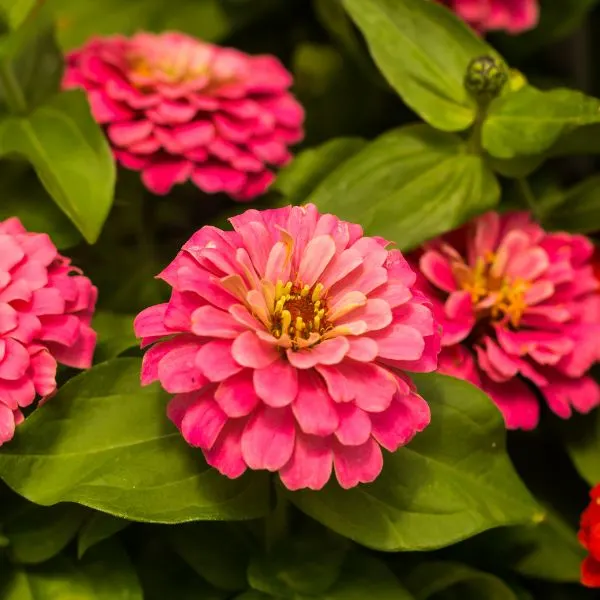
- Botanical name: Zinnia grandiflora
- Sun Requirements: 6 to 8 hours of sunlight per day
- Soil Type: rich in organic matter and well-draining.
Zinnia is a flowering plant in the Asteraceae family that goes by the common names Rocky Mountains zinnia and Plain’s zinnia. Some Native American tribes utilize this plant for medicinal and ceremonial uses.
Zinnias are available in a variety of colors, ranging from gold to vivid red and orange. They, like daylilies, prefer full sun and well-draining soil. They may get quite large and are excellent partners for daylilies when planted in a sunny border setting. From early spring to late autumn, they are a riot of color.
Bad Companion Plants for Daylilies
1. Ferns
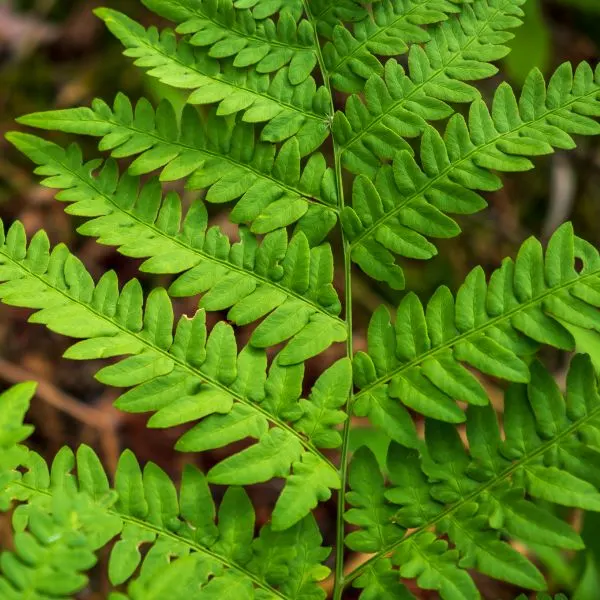
Ferns are a poor companion plant for daylilies since nearly all fern plant species wilt and die when placed in a daylily garden bed. Ferns dislike direct sunlight, and their leaves can soon sear if exposed to it for more than 2 hours. Most species also demand wet soil and high humidity. If the root systems grow too dry, they will die off. As a result, growing ferns alongside daylilies is a horrible idea.
2. Hydrangeas
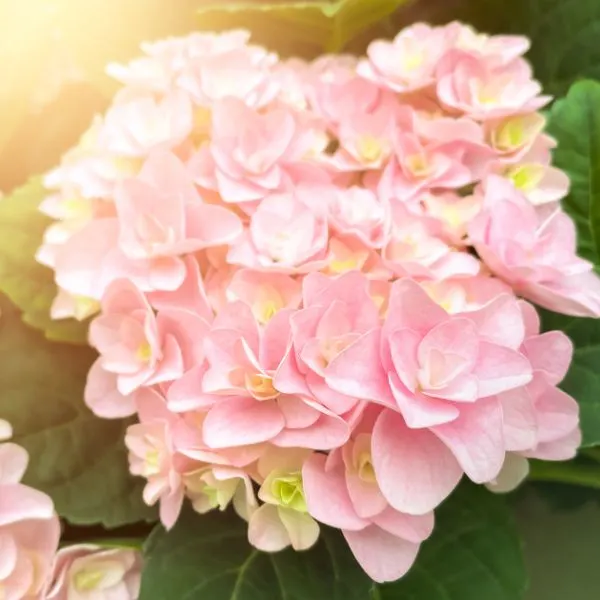
You could explore growing hydrangeas as a backdrop with some daylilies in front for texture or to establish a border. This is because Hydrangeas require a little early sun and wet soil to thrive. This lovely plant is not a good choice for your daylily bed, which means they have different growth circumstances, which influence the plant’s performance in the garden.
3. Lily of the Valley
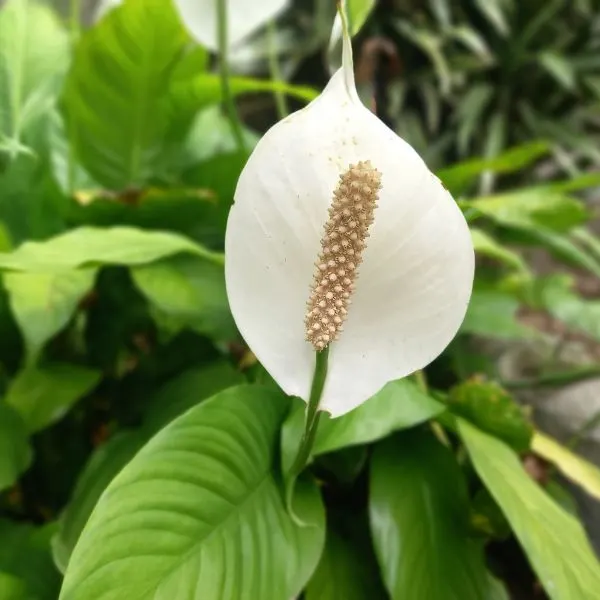
Most people believe that the lily of the valley is an excellent choice since it grows rapidly. However, they could be better partners. These Lily plants, too, demand a lot of water and love shade. If you plant them in direct sunlight, they will shortly perish. It is not a good idea to plant Lily of the Valley with daylilies since they do not have similar growth conditions.
4. Thyme
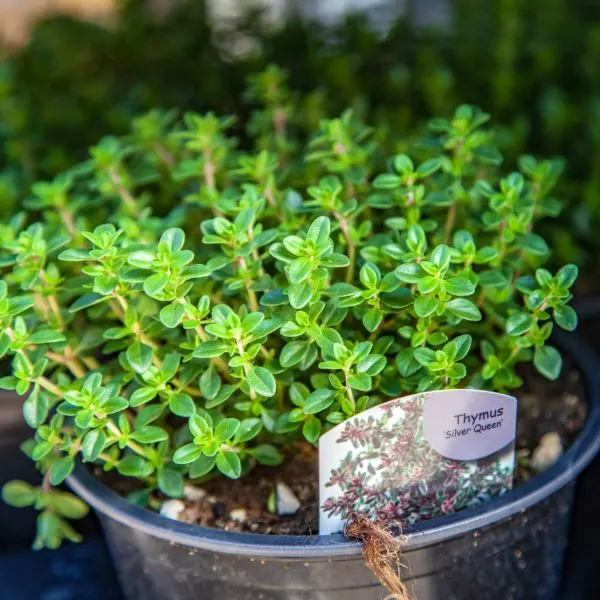
Creeping thyme is an example of a plant that spreads across a large area. They will most likely obstruct sunlight, preventing it from reaching the daylily leaves. As a result, your daylilies will not be able to reach their full height and generate adequate leaves. This makes thyme an unsuitable companion plant for daylilies.
5. Sprinter Boxwood (Buxus)
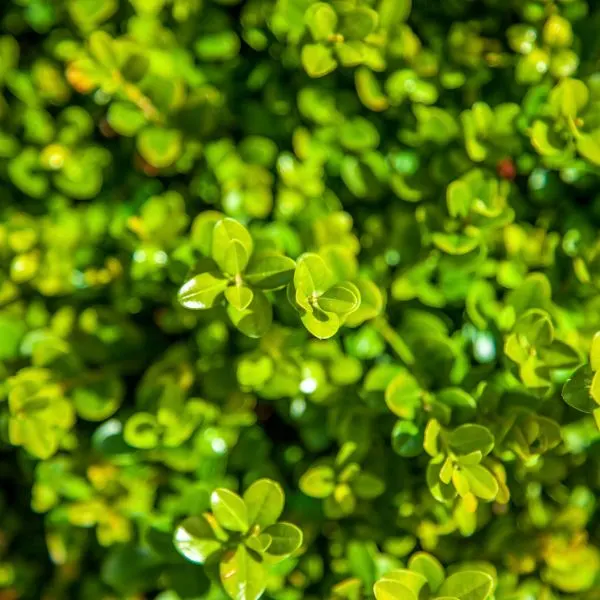
This plant is one of the Significantly Short Plants that impact daylilies. If the plants’ roots are too short, they will be forced to compete for soil resources with daylilies.
If your daylilies are growing next to tall companion plants, you may add shorter ground cover plants between and on top of the bulb clumps. This allows them to cover the ground while yet allowing the sun to shine through at ground level.
FAQs
How many daylilies can you plant together?
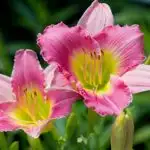
Daylilies are ideal for landscape plantings in groups of three or five, especially when combined with ornamental grasses and small shrubs.
Will daylilies choke out other plants?
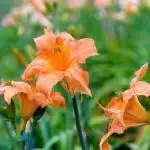
You almost certainly have a common day lily (Hemerocallis fulva) in your garden. Because of its dense tuberous roots, this plant is considered invasive in the Chicago region. As it spreads throughout the garden, it will choke out other plants.
How do you landscape with daylilies?
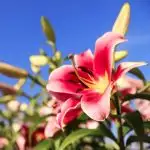
Use large pots with a diameter of at least 15-18″. Pots in growing zones 4-6 will need to be protected from the winter cold. They are bordering shrubs. When planted among woody landscape plants like spirea, potentilla, hydrangea, and dwarf evergreens, daylilies can have a shrub-like presence and can hold their own.
How do you arrange daylilies?

Place near-white daylilies next to perennials with flowers other than white for the best color effect. If not, the daylily will seem off-white.
Do daylilies need to be cut back?
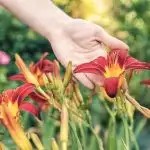
Daylilies only need to be trimmed back once a year, but there are only two occasions when pruning is permitted. The optimum time of year to prune Daylilies is in the spring or fall. It all boils down to personal choice and what is simpler and more convenient for you.
What do you do when daylilies get too big?
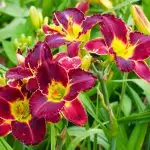
A sharp knife is frequently required to separate huge, dense clusters. Each division should have two or three leaf fans and a healthy root system. Cut the leaves back to 6 to 8 inches when splitting daylilies in late July. As soon as feasible, replant the divisions.
Will daylilies choke out weeds?

Daylilies are not only lovely; they also have several applications. They grow so densely that they choke out the majority of weeds in your garden and help hold soil on steep slopes. They look fantastic planted along banks, roadsides, or rivers.
Wrapping up
Daylilies are flowering plants in the genus Hemerocallis, a member of the Asphodelacaea family, and in this article, we have been able to discuss Thirty-Five (35) Good Companion plants for daylilies and Five Bad companion plants for Daylilies, and we now know the reason why they are great or dangerous for daylilies also.
Daylily buds have more protein and vitamin C than green beans or asparagus and as much vitamin A as asparagus. The orange color of the wild daylily (Hemerocallis fulva) comes in part from two carotenoids that are particularly good for your eyes.
Daylilies like well-drained, fertile soil but are adaptable and tolerate poorer soils and heavy clay. They prefer some moisture in spring and summer, although they dislike sitting in waterlogged soil. Established plants will cope with drought, although flowering may be reduced. Also, it is advisable to watch out for deer as they prefer to mulch on daylilies.
More stuff to check out
